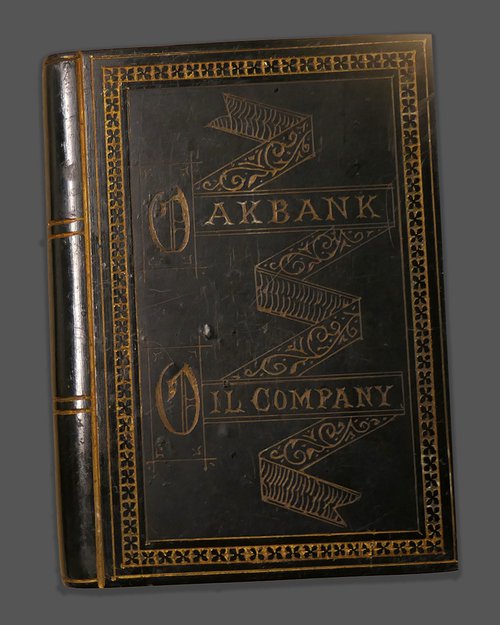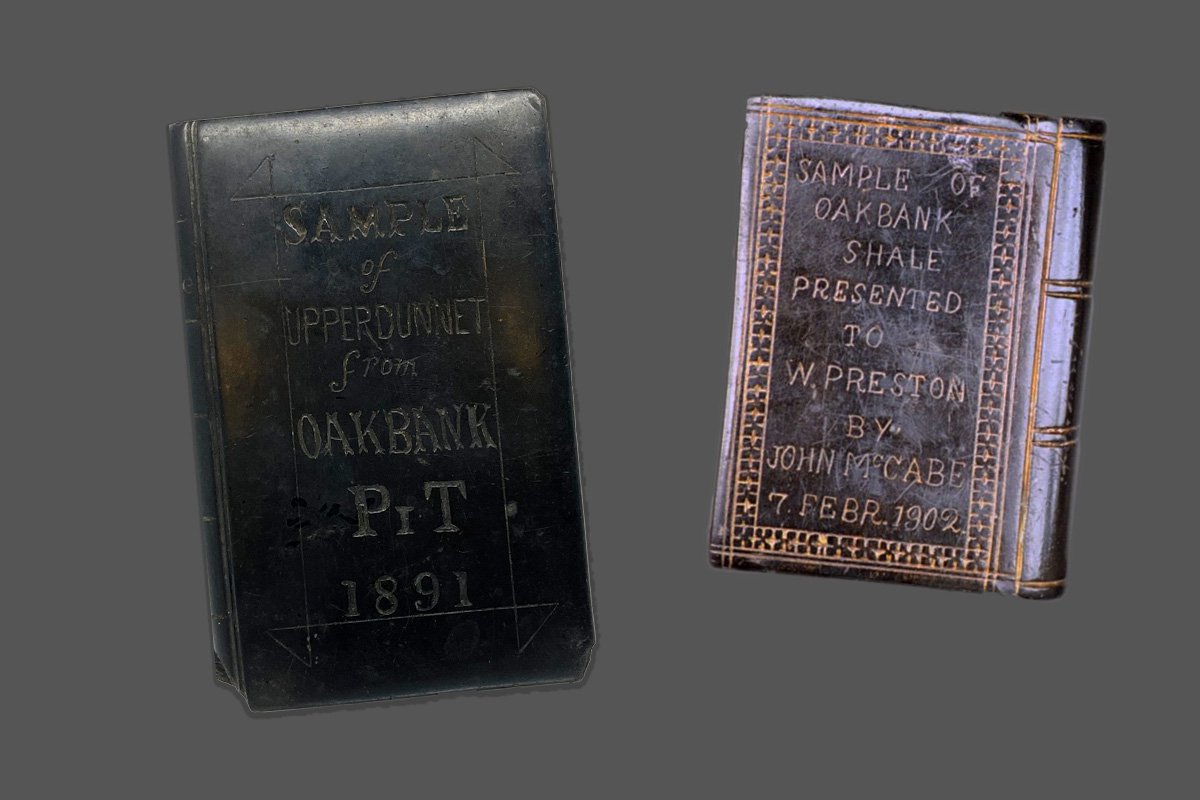Carved in Shale
The Art of Shale Ornaments

It was said that one test for a good quality oil shale was to take a lump and try to pear off a slither with a pocket knife. With the richest shales, a thin paring would curl up behind the blade, with no hint of grittiness and often showing a black, glassy sheen.
It is not uncommon to come across shale beads, rings and amulets in archaeological digs, so it seems that, from the earliest times, this unusual glossy black rock was prized for making precious things.
In the age of shale mining, those with a little spare time on their hands, or keen to impress others with their knife skills, would whittle away for hours on lumps of the finest oil shale. Many carved rings as a display of skill, or other novelties to commemorate events or maybe even as love tokens.

Carved books were especially popular. It wouldn’t take great skill to square off a slab of shale and, when necessary, grind flat and polish the outer faces. Lines, letters and decorations could then be incised into this flat surface, and filled with golden paint. The contrast between the jet-like blackness of the shale and the sheen of the gold could be magnificent. Most commonly the book was fashioned as the Holy Bible, as if carving were an act of devotion, but usefully including information on people, places and dates on a rear cover.
Perhaps the most developed form of shale book served almost as a technical record, with the front cover bearing information about the specific seam from which the shale was cut on and, the rear, a full cross section diagram of the seam showing the different layers that occurred within it. It might be imagined that these solid shale books served almost a technical record, which were carved or commissioned by mining engineers. A blend of art and science.
File Records
- LVSAV2022.051 - Book Carved from Upper Dunnet Shale - Piece of Upperdunnet shale from Oakbank, carved to look like a book. Front engraved with 'Sample of Upper Dunnet from Oakbank Pit 1891'. Reverse engraved with diagram of shale seam.
- LVSAV2018.038 - Box - carved from cannel coal - Small decorated box within inscription recording that it was carved from Hucknall coal in 1898
- LVSAV1987.024 - Oilshale carving - Model of the "Holy Bible" carved from Oakbank shale, inscribed "sample of Oakbank shale presented to W. Preston by John McCabe, 7 Febr. 1902".
- LVSAV1997.006 - Oilshale Carving - Piece of oil shale, crudely engraved with the words "Broxburn Shale"
- LVSAV2001.010 - Oil Shale Carving - Oil shale carved into the shape of a book, titled "The Broxburn or main Shale Seam 1899", with lines and letters engraved and coloured gold
- LVSAV2022.090.001 - Oilshale Carving - Book - A piece of Scottish shale which has been carved into a book with gold paint decoration. 'Oakbank Oil Company' carved on front. 'Duddingston Shale' carved on the back.
- LVSAV1985.052 - Ring carved from shale - Finger ring carved from Dunnet shale seam in Breich Pit 1944/5.
- LVSAV2022.067.085 - Shale - A piece of shale which has the following carved into it: 'This piece of OIL SHALE was dug in No. 2 Mine, Philpstoun by Robert Crichton on his first visit down a mine, 19th Nov 1887.' Robert was 5 or 6 years old at the time. This was a family tradition to mine a piece of shale on their first trip down a mine.
- LVSAV2022.067 - Shale - A piece of shale with 'Robert Crichton, 28 September 1927' carved into it. This was Robert Crichton's son, Robert Crichton Junior, who mined his first piece of shale with his sister Anne. This was a family tradition to mine a piece of shale on their first trip down a mine.
